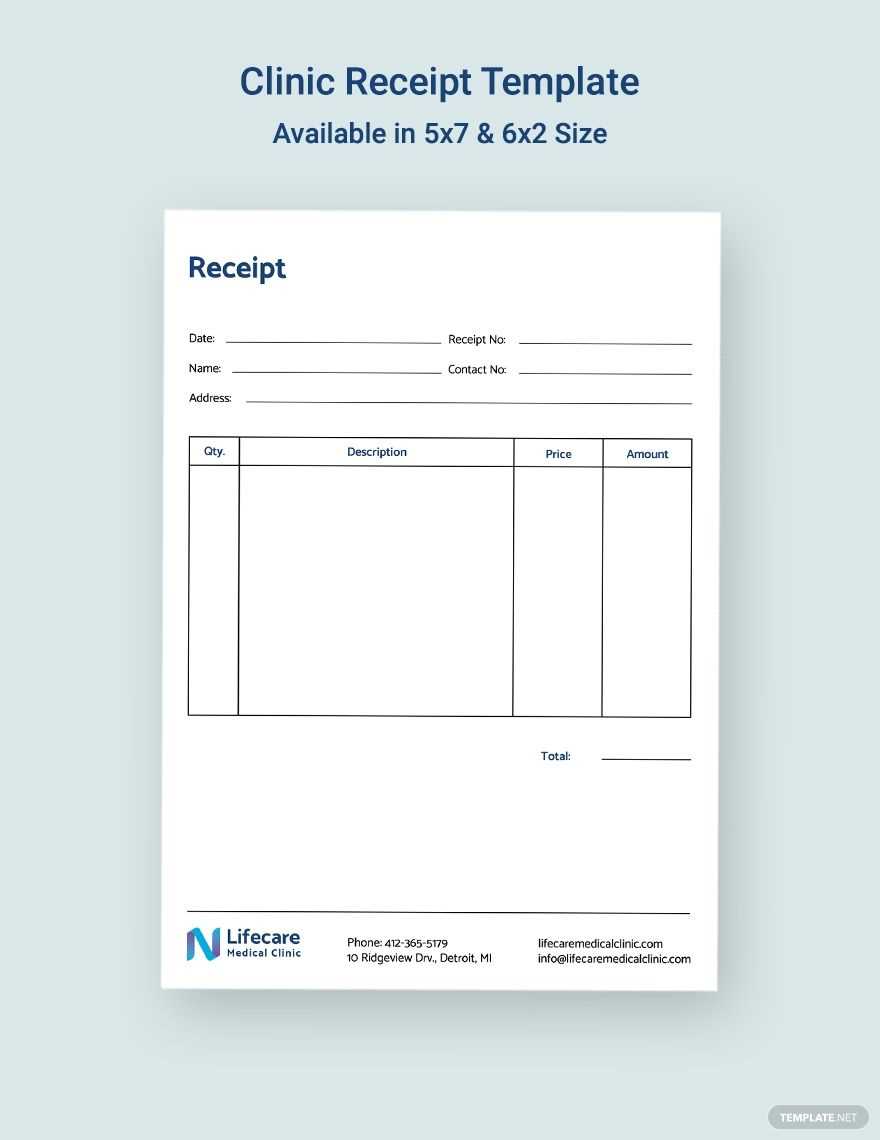
Creating a pharmacy receipt template requires clarity, accuracy, and compliance with industry standards. A well-structured receipt should include essential details such as the pharmacy name, contact information, transaction date, prescription details, and itemized pricing. Adding a unique receipt number helps with record-keeping and verification.
For better readability, use a structured layout with clear sections. Highlight key elements such as medication names, dosages, and patient information in a consistent format. Including a barcode or QR code can streamline digital record management and improve customer service.
Ensure compliance with legal and regulatory requirements. Some jurisdictions mandate the inclusion of specific disclaimers, tax details, or prescriber information. Reviewing local guidelines helps avoid compliance issues and ensures transparency in billing.
A digital or printable template should support multiple formats, including PDF and Excel, for easy customization. If integrating with pharmacy software, ensure compatibility with automated systems to reduce manual entry errors and enhance efficiency.
Pharmacy Receipt Template: Key Aspects and Practical Use
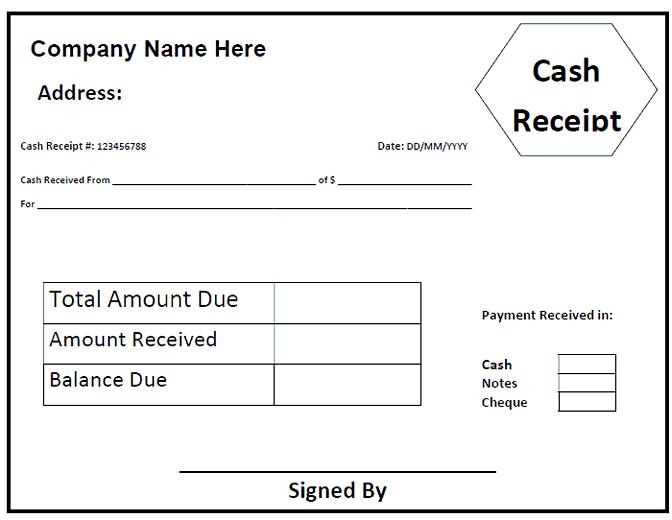
A pharmacy receipt should include essential details to ensure transparency and compliance. Always include the pharmacy’s name, address, and contact information at the top. This establishes credibility and provides customers with reference details.
Clearly list purchased medications, including their names, dosages, and quantities. If applicable, specify whether a generic or brand-name drug was provided. This helps customers verify their purchases and allows for accurate insurance claims.
Include pricing details such as unit price, total cost, taxes, and discounts. A breakdown of these elements prevents confusion and ensures customers understand their charges. If insurance coverage applies, indicate the amount covered and the remaining balance.
Attach a unique receipt number and transaction date to each document. These elements simplify record-keeping for both the pharmacy and the customer. If the receipt is digital, ensure it is formatted correctly for easy storage and retrieval.
A section for pharmacist comments can be useful for dosage instructions or warnings. Additionally, include a return policy or refund conditions if applicable. Clarity in these areas minimizes disputes and enhances customer satisfaction.
Design the receipt for readability, using clear fonts and structured formatting. Ensure that all necessary details fit within a single page without unnecessary clutter. A well-organized template speeds up transactions and improves the overall experience.
Mandatory Information on a Pharmacy Receipt
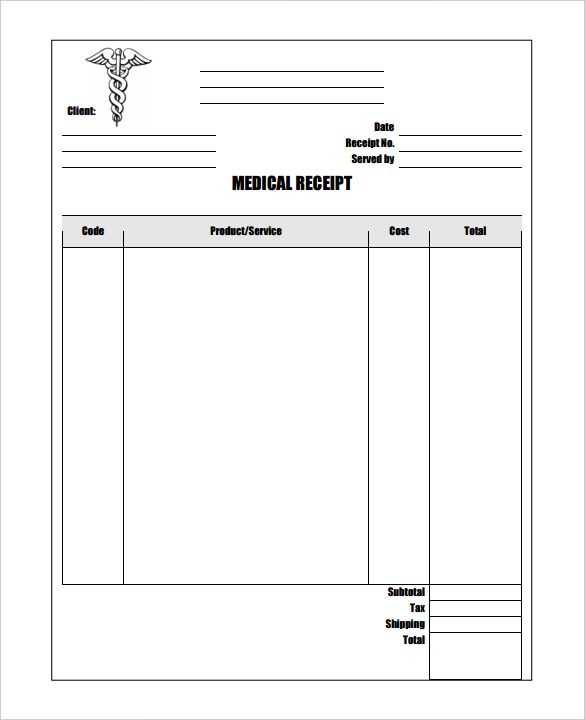
A pharmacy receipt must include the pharmacy’s name, address, and contact details. This ensures proper identification and allows customers to reach out if needed. The date and time of the transaction confirm when the purchase was made, which is crucial for tracking expenses and potential returns.
The receipt should clearly list the purchased medications, including their names, quantities, and unit prices. If applicable, the prescription number links the purchase to the original doctor’s order. The total cost, including taxes and any discounts, must be displayed transparently.
Patient information, such as name or prescription holder details, should be included when required by regulations. The pharmacist’s or pharmacy technician’s identification may also be necessary in some cases.
Payment details, such as cash, credit card, or insurance coverage, complete the record. Some receipts may also include a barcode or transaction reference for easy verification. Clear and accurate documentation helps prevent disputes and supports insurance claims when applicable.
Formatting and Layout Guidelines
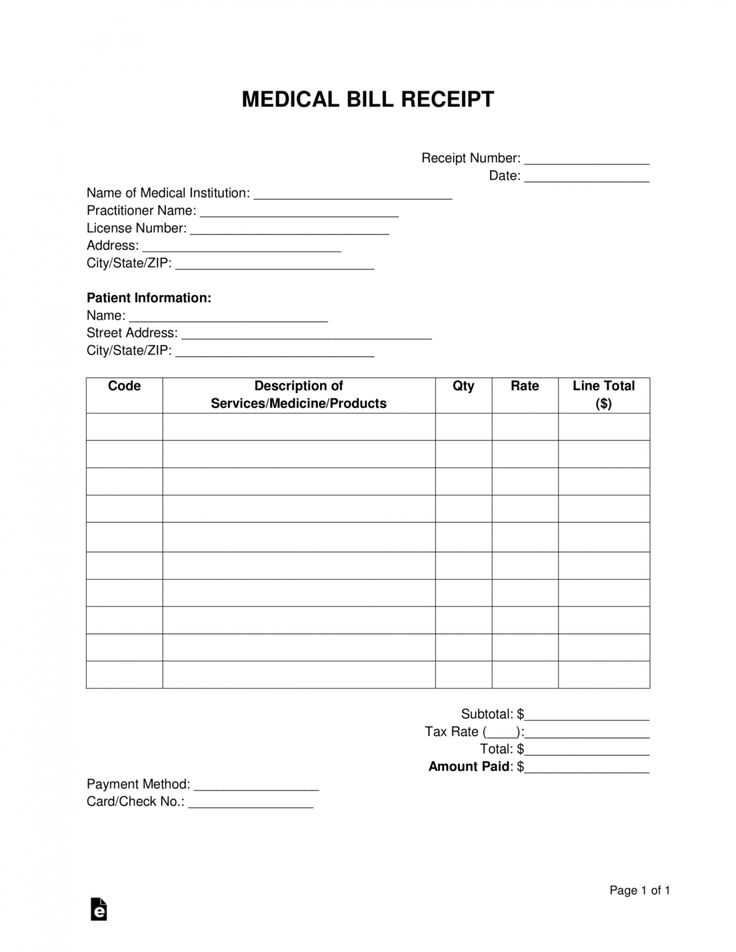
Use a clear and readable font such as Arial, Helvetica, or Times New Roman. Maintain a font size between 10pt and 12pt for standard readability. Bold important details like total cost and prescription numbers.
- Align text to the left to ensure easy scanning.
- Keep margins between 0.5 and 1 inch for proper spacing.
- Use a single-column layout to avoid clutter.
- Separate sections with horizontal lines or increased line spacing.
Place the pharmacy name and contact details at the top in a slightly larger font. The prescription details should follow, with clear labels for medication names, dosages, and instructions. Summarize payment details at the bottom, ensuring the total amount is emphasized.
Avoid excessive decorative elements. Stick to a monochrome or light-colored scheme for better readability, ensuring any barcode or QR code remains scannable.
Customization Options for Different Pharmacy Needs
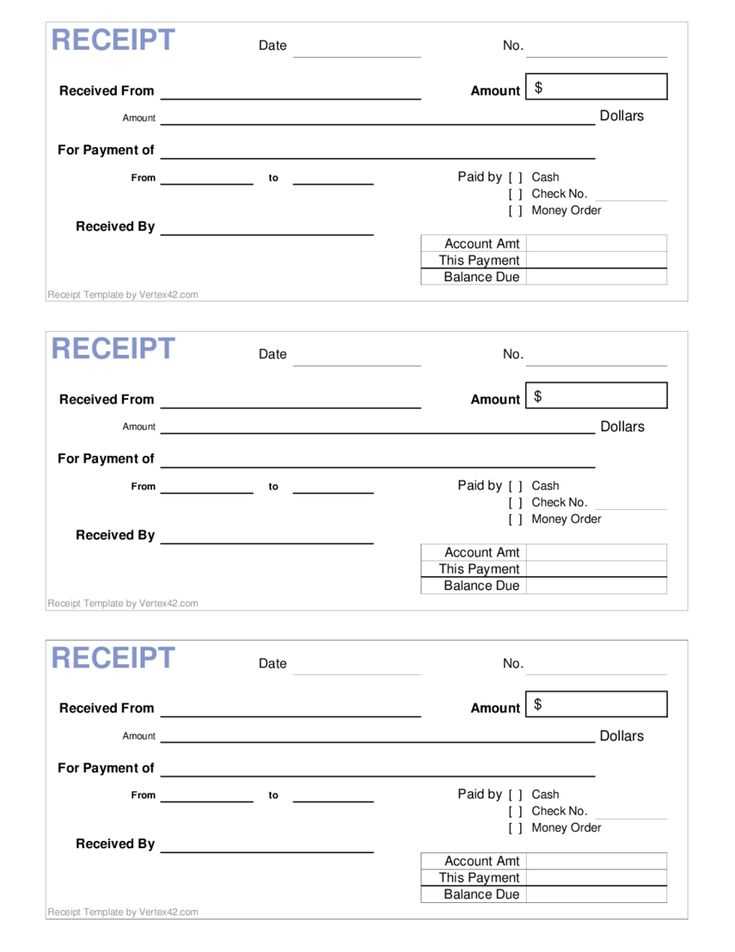
Adjust templates to match specific requirements by selecting the right layout, font, and branding elements. A clear, well-structured receipt ensures customers can easily verify purchased items, prices, and payment details.
Branding and Compliance
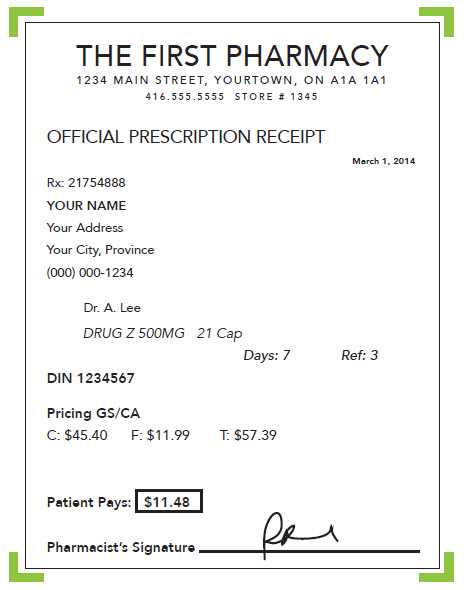
Include a pharmacy logo, contact details, and license number to establish credibility. Ensure compliance with local regulations by displaying required disclaimers, tax information, and prescription details where necessary.
Variable Itemization and Pricing
Modify the receipt format based on transaction complexity. For prescriptions, include drug names, dosages, and refill details. Over-the-counter purchases may require only product names and prices. Enable automatic tax calculations and discounts for loyalty programs.
Enhance usability with barcodes for easy returns and electronic storage options for digital records. Tailoring each element improves clarity and meets both operational and customer needs.


